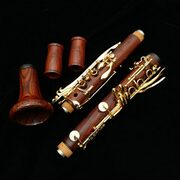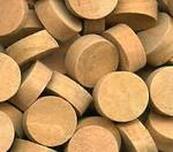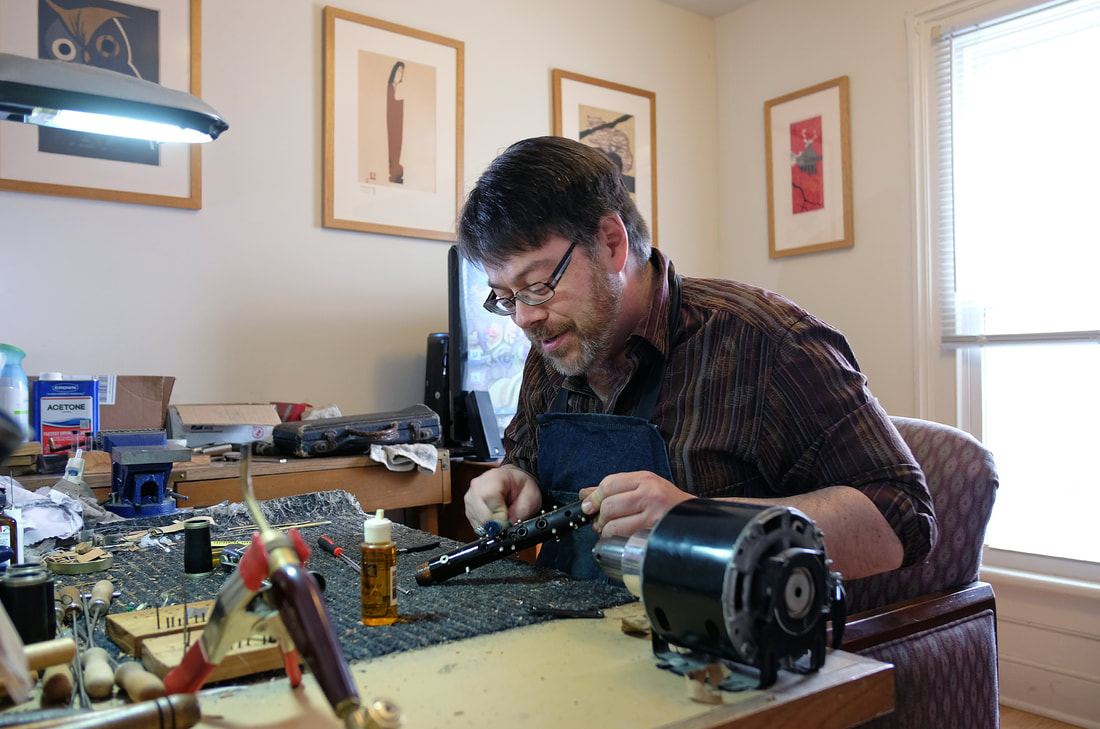 There's a topic in the world of clarinets that I've never heard touched upon, so I'm going to chance it tonight - Clarinet Porn and the "Good Enough" clarinet. I may not make any friends with this, but I think it needs to be said...to YOU! "Yes, you there with your $5000 Backun with gold plated keys, custom barrel, handmade mouthpiece, $100 ligature and reeds hand shaved on the thigh of a Cuban virgin!" "Aren't you still in high school? NO! College? You look awfully young...How long have you been playing? Three years, huh? And those gold plated keys are really enhancing your upper register, you say? Lemme hear your high G....sure, I can wait while you look up the fingering...I'm in no hurry. What happened to that nice used Leblanc Noblet with the Portnoy mouthpiece that you used to play? Keys got dull? You mean they weren't even silver plated?! The nerve...and then you saw this one on WWBW.com, huh? Parents took out a second mortgage after you held your breath at the dinner table? Well, its always nice to see dedication in the arts..." "Getting back into playing after 35 years off, huh? Yeah, community band has some tough 3rd parts, that's true...does the inside of your lip always look like that? Ow...You say the Backun bell really helps with intonation on the low notes? But...didn't you just have to shorten your barrel by 2mm because you were playing so flat? Well, yeah, long tones are pretty boring its true...especially with that tone..." Now, all kidding aside...I've been on Instagram for 3 months and the volume of Clarinet Porn has to be seen to be believed - there should be parental settings on that darn site! Yes, Backun, Selmer, Buffet, Patricola, et al make really fine horns (for thousands of dollars) and if you are in the top 5% of serious clarinet players you'll be able to tell the difference...and so will your audience. I'm sorry to tell you this, but... its the player, not the fancy horn. I know pros who like hard rubber clarinets (for volume and cheapness), who like metal horns, who use synthetic reeds...and even my buddy Glenn, who has a 1970's Bundy student flute...and he can smoke on that thing! If you're in school but not planning on a career in performance, if you're getting back into playing, doubling from saxophone, etc. - in other words, the other 90-something% of players - please just buy a Good Enough clarinet and spend the rest on that transmission noise and your student loans! Ideally, a Good Enough clarinet would be an older wood instrument (like a Leblanc Dynamic, Penzel Mueller Artist, or Series 9 Selmer) in good condition, competently refurbished with good quality pads, played with a hard rubber mouthpiece made by someone with enough pride of craftsmanship to put their name on it, using a Rovner or Bonade ligarture, holding a reed not made in China! I'm not going to get too specific, as there are lots of good clarinets, mouthpieces and reeds - you need to TRY them and see what feels good in your hands and sounds good to your ears... That's it - that's all you'll need. You'll make beautiful music, your bandmates will love instead of envy you and your tranny will shift like a dream!
6 Comments
 I recently received a horn for restoration and was impressed with the look of the previous overhaul: cleanly beveled cork pads on the upper joint, and tan kid on the lower. The only problem was that it didn't pull anything close to a vacuum: Those beautiful cork pads had been laboriously installed on a 1920's Albert system clarinet, whose tone-holes were nowhere near flat or sharp enough to make a clean impression...and, hence, a good seal! This got me thinking about the pros and cons of cork pads; many people request them in an overhaul, often without any clear reason for doing so other than that they heard it was the 'thing to do'. On a modern horn with crisp, flat tone-holes cork is a joy, giving a great seal and improving the clarity and projection of dull notes. On anything older than a couple decades, I will generally try to discourage them from full cork on the upper joint, and here's why: A tone-hole is cut flat into a curved, wooden surface. Wood changes over time, flexing, swelling and shrinking with variations in temperature and humidity. A new tone-hole will be flat and sharp, if you're lucky - an old one is often anything but! Aside from changes in the wood itself, there is also the quality of the initial machining and subsequent overhauls to consider: Hasty/careless work will sometimes leave small nicks/dings on the edge, and sometimes you'll see evidence that someone has attempted to 'reface' a tone-hole, doing more harm than good. In these circumstances, a cork pad is more of a liability than an asset! Its firm surface, well suited for taking a clean impression from a perfect tone-hole, won't contour to an imperfect one and the result is a poor seal. This can be hard to diagnose subsequently, as the ring that cork takes will fool a paper feeler with its bite, leaving you scratching your head as to where that leak is coming from! On the 50+ year old instruments that I commonly service, I'll use cork on the register key (since its tube doesn't change with age) and maybe A/Ab if the throat is stuffy and the tone-holes look good: often they'll need a little 'touching up' to pass muster. Other than that, I stick with leather, which is long lasting, contours well to the aging tone-hole, and has a feel more similar to the fingertip for even response. I'd be interested to hear about other people's experience with cork on older horns.... |
Archives
February 2024
AuthorThe Licorice Shtick Blog is the creation of the Vintage Clarinet Doctor, a Winston Salem, NC based woodwind instrument repair shop specializing in vintage and antique clarinets, saxophones, and the occasional flute. Categories |

 RSS Feed
RSS Feed